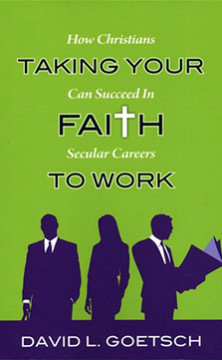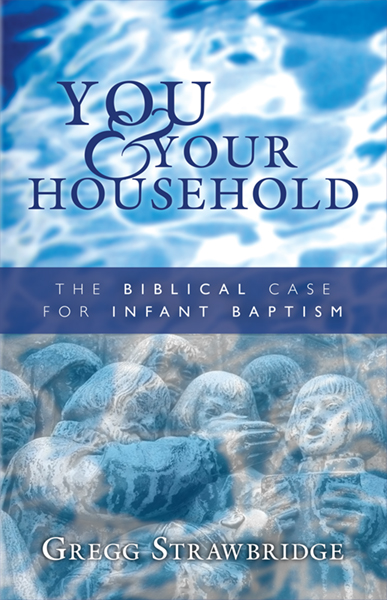This week and next, colleges across the country will commence their Spring semester. Many students who grew up in Christian homes will consciously trade in their faith for a philosophical system antithetical to the one of their upbringing. Even more students, however, while not outright denying their Christian faith, will unconsciously adopt a philosophical system that is inherently idolatrous. It’s not that this second group wants to be idolaters; they simply lack the tools to discern the nature of the bill of goods their professor is selling them. So, how can one know if a given philosophical system (Kantianism, Marxism, Platonism, etc.) is idolatrous? One can begin by asking two questions. First, “is this logical?” Second, “is this sinful?” If the answer is “yes” to the first question, the answer will be “no” to the second question. If the answer is “no” to the first question, the answer will be “yes” to the second question. Here’s a story to illustrate the point:
On her twenty first birthday, Cindy was promised a night on the town with her girlfriends. After dinner, her friends came to her house in a limo, blindfolded her, and took her to Crazy Dave’s Casino (obviously, she had some pretty lame friends…). As they were getting into the limo, they shoved some bills in her purse and said “tonight’s on us!” Once inside, Cindy took off her blindfold. Because there was no signage on the inside of the building, Cindy still wasn’t sure where she was. Eventually, she saw a waitress and asked if she could get something to drink. As she pulled out her wallet to pay, she saw four hundred Crazy Dave’s Casino-Bucks in her purse.
Now, there are only two ways that Cindy could have deduced her location. First, she could have spotted a logo. While it’s true the big Crazy Dave’s sign was outside, there were actually logo’s on the slot machines, napkins, etc. Secondly, of course, she could’ve known by looking at the Crazy Dave’s Casino-Bucks. Her currency could’ve revealed to her the location. Likewise, her location could have told her what sort of currency her friends slipped into her purse. For Cindy to answer the question “am I at Casino Dave’s?” she’d have to look at her currency. For her to answer the question “what sort of currency do I have in my purse?” she’d have to look at the signage.
Back to our original question: how can one know if a given philosophical system is idolatrous? There are at least two ways: Firstly, you can look for signage. Here, you’re trying to determine if the system outrightly advertises itself as sinful. Put simply, this means asking a couple questions of the philosophical system. One question is, “does it enable me to do something God forbids?” Nihilism, for instance, enables one to tear down systems for “tearing’s” sake. Well, some systems need to be torn down, but we’re commanded to obey God’s rule. Any tearing, then, must not be for its own sake, but because we’re seeking a system patterned after the rule of God. Thus, we know Nihilism is idolatrous because it enables us to do something God forbids. Another question to ask is, “does the system forbid me from doing something God commands?” Animism, for instance, is idolatrous because it teaches that everything on the earth, indeed the earth itself, has a soul. Thus, I’m forbidden from, among other things, giving thanks to God. If “Mother Nature” is giving me food, my thanksgiving is directed to the object I’m eating rather than the One who gave me the object to eat. Like Cindy, you’re in a building (the Casino of Idolatry, if you will), and you’re looking for clues as to the nature of the structure.
Secondly, you can look at the currency in which the philosophical system deals. This is crucial because not all philosophical systems are easily detected as “sinful.” Like Cindy in the casino, there isn’t a big Crazy Dave’s sign, and the logos are quite small and inconspicuous. Thus, it won’t do to simply ask “am I in the Casino of Idolatry?” Rather, you’ll have to ask “am I using the currency of the Casino of Idolatry?” Well, what is the currency of idolatry? In a word, it’s illogicality. If the system is illogical, it is idolatrous. Idolatry is always making a deal in which you trade life for death; the family blessing for some soup. An idolatrous philosophical system never uses the currency of “logic.” Thus, one can ask the question, “Are the propositions which this philosophy proposes logical?” If the answer is “no!” then you can know the system is itself idolatrous.[1]
With a little deductive reasoning, one can find idolatry in any illogical statement. Likewise, one can find incoherence in any given expression of idolatry. In his long career, Vern Poythress has become an exemplar for how to do such deductive reasoning. In the quote below, Poythress does a wonderful job showing the inherent idolatry and incoherence of Kantian philosophy. While his remarks are limited to Kantianism, his deductive method can be applied to any philosophical system. Specifically, notice two things. First, he shows how Kantianism is illogical; it’s self-defeating. Its currency can only be spent “in-house,” as it were. In this way, Poythress is saying “look at your currency, it’ll tell you that you’re in the Casino of Idolatry.” Secondly, Poythress draws attention to the sinful signage of Kantianism. The system enables you to claim complete autonomy; rejecting any Creator-creature distinction. In this way, Poythress is saying “look at the sign, it’ll tell you that your currency can’t be logical!” Poythress is modeling for us the ways in which we can both analyze a given philosophical system, and consciously embrace our biblical faith. Says Poythress:
“…Kantian philosophy discusses everything under the sun, including God, including morality, including the nominal realm, and proceeds to tell us what we can and cannot expect to know about the noumenal realm, and why. An impressive scope, would you not say? A scope far larger than the scope that Kantian philosophy assigns as the limits of reason. Kantianism uses reason to build a system that sets the limits of reason. To do so, it has to survey the field. It has to transcend the phenomenal and look at the noumenal realm as well. It has to take a God’s-eye view. This view, once achieved, afterwards allows it to tell you and me the narrower limits in which our reason can safely operate.
The God’s-eye view is Kantianism’s secret, and simultaneously its weakest point. Kantianism is self-destructive. In its results, it tells us what are the limitations of reason. If we take those results seriously, we have to apply them to Kantianism’s own reasonings about philosophy. Those reasonings go beyond the limits, and so we conclude that they are not sound. And so the whole philosophy is unsound. And so the limits have not been established. And so we are back to the beginning. We have gotten nowhere. Except now we know not to follow Kantianism.
In addition, Kantian philosophy testifies unwittingly to the reality of human ability to transcend the immediate. We can stand back from the immediacy of experience and survey what we have been doing. And then we can stand back from that and survey the meaning of our more abstract mediations. We have the capacity… for a miniature transcendence, because our minds imitate the mind of God. We can imagine what it would be like to look at everything from God’s point of view.
But Kantian philosophy engages in this whole process of transcendence autonomously. By its act of attempting transcendence, it testifies to God who made the human mind. By its autonomy, it defies God’s instruction in Scripture and refuses to give him thanks (Rom. 1:21). Not only that, but in effect it tries to be God. Having achieved what it hopes is a godlike transcendence, it can then dictate as a god what limits we poor mortals must have for our reasoning.
In a sense, the Kantian philosophers are the godlike beings, because they can dictate to poor mortals the limits of their experience and their reason. But in another sense Kantianism allows all human beings to be godlike. Each of us becomes in his own person a kind of godlike creator of the world. We ‘create’ the whole world of phenomena, including all the structures of time and space and causality and logic and reason, by imposing structure through our mental categories. We become gods. Can you see how such a conception has a covert religious appeal for people—really all of us in our sinfulness—who desire autonomy?”[2]
[1] One may ask, “but if a system is illogical, why would anyone believe it?” After all, the professors don’t seem to be play-acting; they really believe in Marxism, etc. The short answer is that they grew up in the Casino of Idolatry. They’ve never been outside, to the real world, and thus they dismiss a dollar bill as “fake,” but hold on to the Casino-Bucks for dear life! Their logic, in other words, is self-referential. It only works in their personal Casino of Idolatry. To know what logic *is* one must venture outside of the casino, to the great (real!) world God has designed.
[2] Poythress, Vern S. Logic: A God-Centered Approach to the Foundation of Western Thought. Wheaton, Ill: Crossway, 2013; 637-638
<>











 The wine our Lord chooses to demonstrate his real presence is purple and Melchizedek teaches us that wine itself is a kingly substance. Wine is symbolically identified with the blessings of the kingdom throughout the Scripture. This is what James B. Jordan calls “the eschatological Messianic kingdom feast.” The promised land in the Old Testament and the kingdom of our Lord in the New Testament are richly portrayed as places abounding with wine. Thus the color and substance work together, developing a rather pointed imagery – particularly relevant to the time of Advent.
The wine our Lord chooses to demonstrate his real presence is purple and Melchizedek teaches us that wine itself is a kingly substance. Wine is symbolically identified with the blessings of the kingdom throughout the Scripture. This is what James B. Jordan calls “the eschatological Messianic kingdom feast.” The promised land in the Old Testament and the kingdom of our Lord in the New Testament are richly portrayed as places abounding with wine. Thus the color and substance work together, developing a rather pointed imagery – particularly relevant to the time of Advent.















